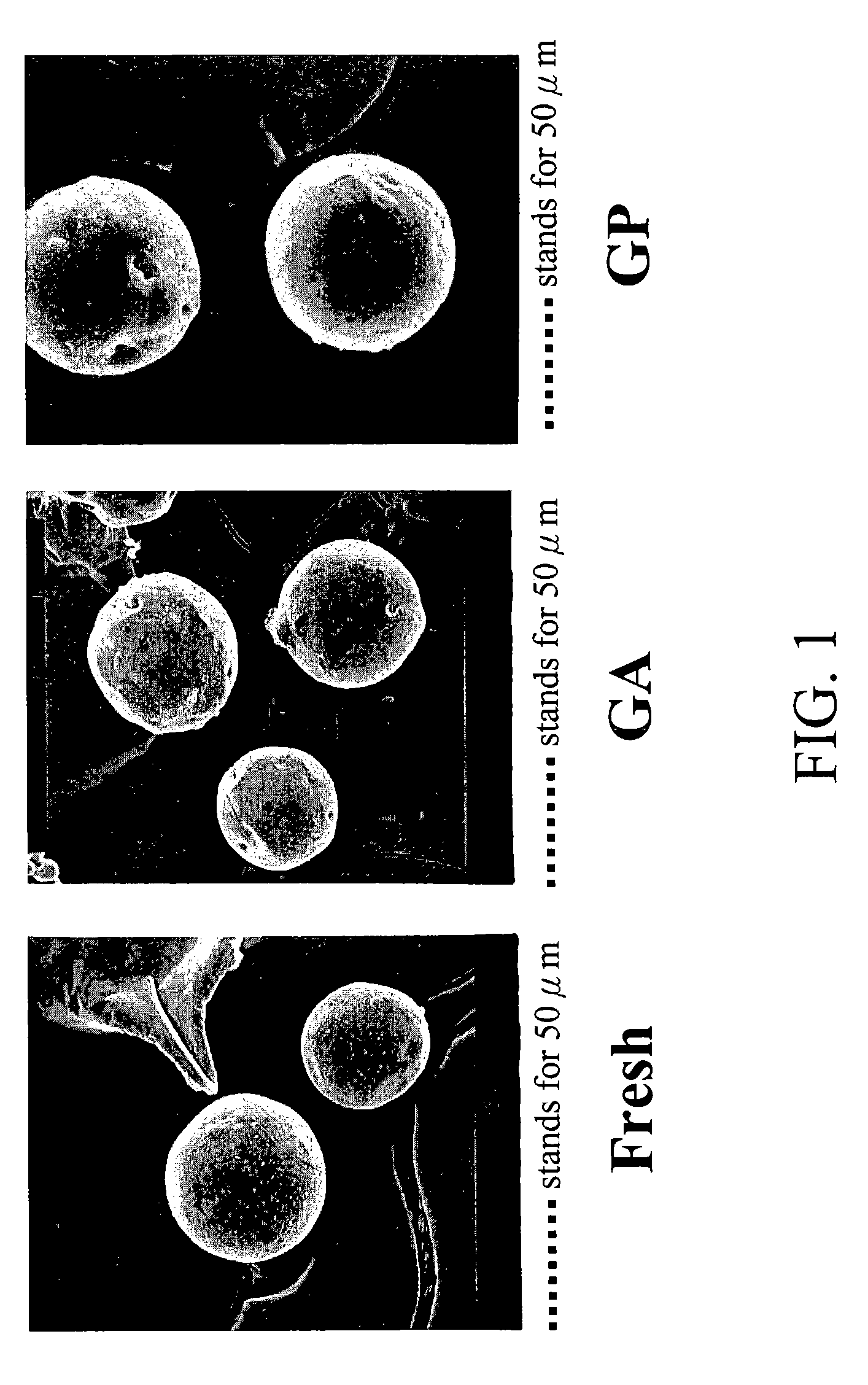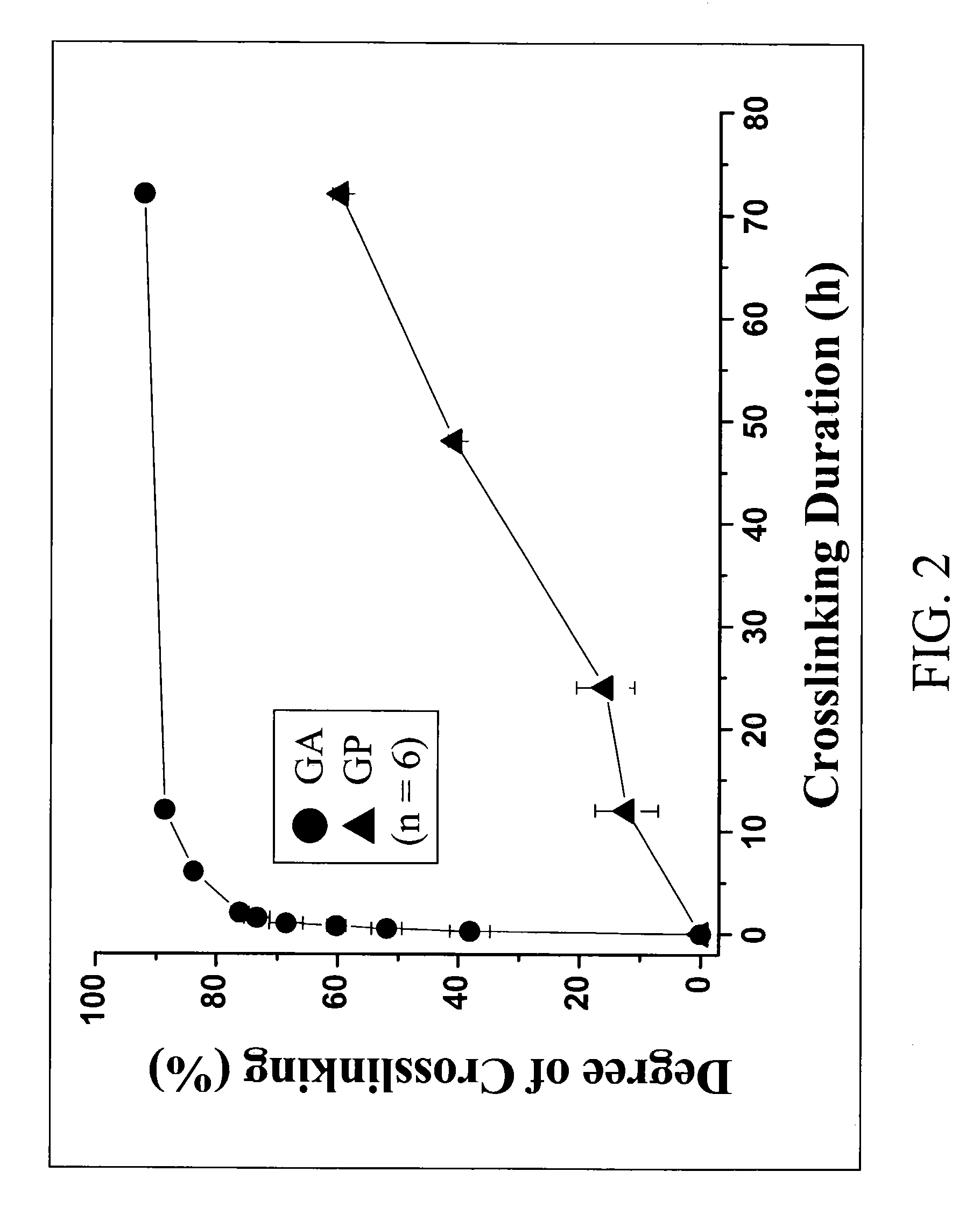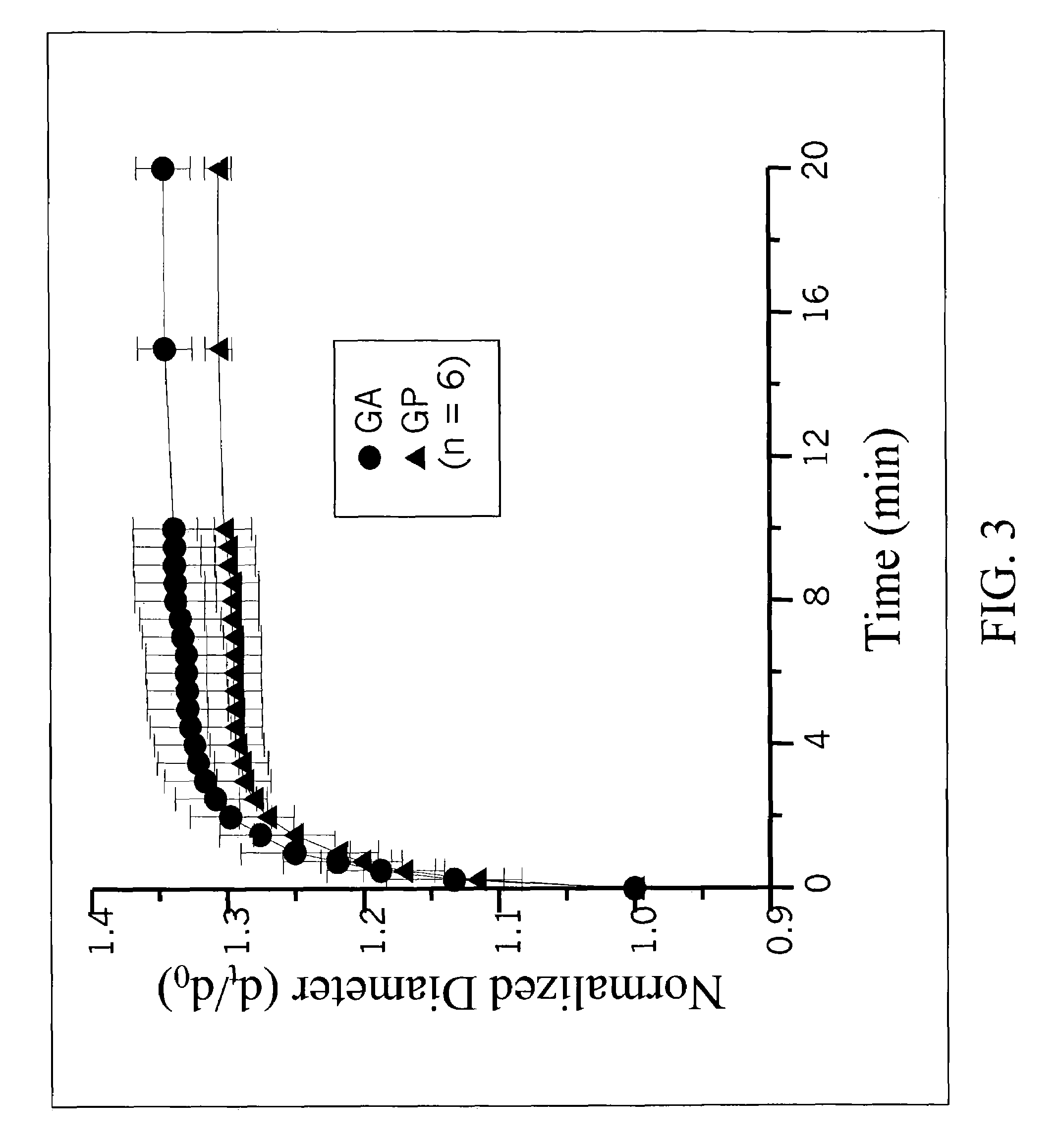Genipin-crosslinked gelatin microspheres as drug carrier
a gelatin microsphere and cross-linked technology, applied in the field of chemical modification of biomedical materials, can solve the problems of not teaching the use of cross-linked products as biocompatible drug carriers, affecting the biocompatibility of biological tissue,
- Summary
- Abstract
- Description
- Claims
- Application Information
AI Technical Summary
Benefits of technology
Problems solved by technology
Method used
Image
Examples
example # 1
EXAMPLE #1
Preparation of Gelatin Microspheres
[0082]Gelatin microspheres were prepared using the emulsification-solvent-extraction method reported in the literature with some modifications (J Microencapsulation 1998; 15:273-281; and J Pharm Sci 1963; 52:664-667). Briefly speaking, gelatin (2.5 g, from porcine skin, 300 Bloom, Sigma Chemical Co., St. Louis, Mo., USA) was dissolved in 10 mL phosphate-buffered saline (PBS, pH 7.4) in a water bath at 50° C. The gelatin solution was added to a 50-mL corn oil and preheated to 50° C. The biphasic system (corn oil and aqueous solution containing gelatin) was thoroughly mixed to form a w / o emulsion using a magnetic mixer for 20 min. Subsequently, the emulsion system was chilled to 4° C. in a refrigerator and gelatin microspheres were formed in the aqueous phase. The gelatin microspheres then were rinsed in acetone for several times to remove the remaining oil on their surfaces. Finally, the rinsed gelatin microspheres were vacuum-dried overni...
example # 2
EXAMPLE #2
Crosslinking of Gelatin Microspheres
[0085]The prepared gelatin microspheres (0.15 g) from Example #1 were dispersed into a 0.44M genipin (Challenge Bioproducts, Taiwan) or 0.22M glutaraldehyde (Merck KGaA, Darmstadt, Germany) of aqueous ethanol solution (90% ethanol by volume) for crosslinking. The degree of crosslinking, determined by the ninhydrin assay, was defined as the percentage of free amino groups in gelatin microspheres reacted with each test crosslinking agent subsequent to crosslinking. In the ninhydrin assay, the sample first was lyophilized for 24 h and weighed. Subsequently, the lyophilized sample was heated with a ninhydrin solution for 20 min. After heating with ninhydrin, the optical absorbance of the solution was recorded with a spectrophotometer (Model UV-150-02, Shimadzu Corp., Kyoto, Japan) using glycine at various known concentrations as standard. It is known that the amount of free amino groups in the test sample, after heating with ninhydrin, is pr...
example # 3
EXAMPLE #3
[0094]The in vivo biocompatibility and degradability of the glutaraldehyde- and genipin-crosslinked gelatin microspheres were examined by implanting test microspheres in the skeletal muscle of the thigh via intramuscular injection in a rat model (Wistar). The test microspheres were sterilized in a 95% ethanol solution over a period of 4 hours. The sterilized microspheres (˜80 μm size), 50 mg, were suspended in 2 mL of physiological saline and injected into the skeletal muscle using an 18G needle. Each animal received two injections (one for the glutaraldehyde-crosslinked microspheres and the other for the genipin-crosslinked microspheres) on either side of the skeletal muscle. The implanted microspheres along with their surrounding tissues were respectively retrieved at 3-day, 1-week, 2-week, 3-week, and 4-week postoperatively. On retrieval, the appearance of each retrieved sample first was grossly examined and photographed. The samples then were processed for ...
PUM
| Property | Measurement | Unit |
|---|---|---|
| degree of crosslinking | aaaaa | aaaaa |
| diameter | aaaaa | aaaaa |
| diameter | aaaaa | aaaaa |
Abstract
Description
Claims
Application Information
 Login to View More
Login to View More - R&D
- Intellectual Property
- Life Sciences
- Materials
- Tech Scout
- Unparalleled Data Quality
- Higher Quality Content
- 60% Fewer Hallucinations
Browse by: Latest US Patents, China's latest patents, Technical Efficacy Thesaurus, Application Domain, Technology Topic, Popular Technical Reports.
© 2025 PatSnap. All rights reserved.Legal|Privacy policy|Modern Slavery Act Transparency Statement|Sitemap|About US| Contact US: help@patsnap.com



